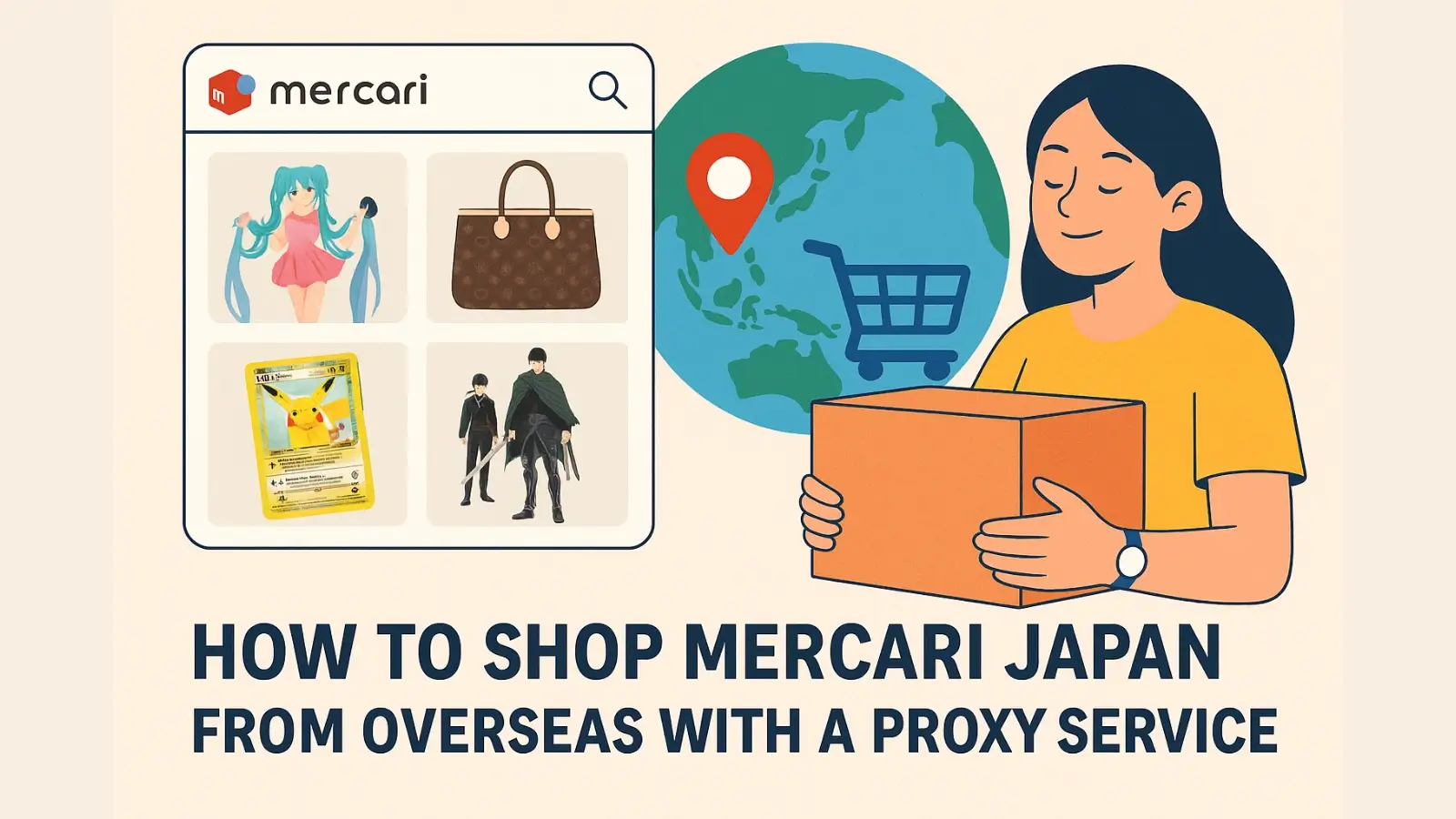


Mercari has grown into one of Japan’s most vibrant online marketplaces. Each month, millions of new items appear—Pokémon trading cards, anime figures, second-hand luxury handbags, and everyday fashion. For collectors and bargain hunters worldwide, it feels like stepping into a constantly refreshed treasure trove.
What makes Mercari so appealing is not just the variety, but the prices. A figure that sold out internationally might still be available in Japan, often for far less than overseas resale markets. The catch, of course, is access. Mercari was built primarily for Japanese shoppers, not for global ones.
Most sellers don’t ship abroad, payment methods are tied to local banks or cards, and the platform itself is almost entirely in Japanese. For overseas buyers, it often feels like the door is shut. Proxy shopping services open that door—acting as middlemen who purchase domestically and forward items internationally.
Browsing Mercari from outside Japan is easy enough. The real frustration starts at checkout.
For overseas shoppers, these barriers mean that a proxy service is essential. In practice, the easiest way to buy from Mercari Japan is through a Mercari proxy, which handles the purchase, domestic delivery, and forwarding abroad on your behalf.
At first, the process might sound complicated. In practice, it’s straightforward once you know the steps.
Start by searching Mercari directly. Using Japanese keywords usually surfaces more listings—for example, “ポケモンカード” instead of “Pokemon card.” Many people lean on Google Translate or use proxy platforms that already categorize items in English.
When you find something you like, copy the listing link and paste it into your proxy’s order form. Some services even allow you to search Mercari from within their own site. Usually, you only need to provide the link, quantity, and any notes such as color or size.
Here you pay for the item itself, any domestic shipping from the seller, plus the proxy’s service fee. Fees differ by service, but they’re typically 5–10% of the item price with a small minimum.
The seller ships to the proxy’s warehouse in Japan. From there, the item is checked and stored. Most proxies include free storage for a limited period, often a few weeks, so you can buy more items and ship them together later.
When you’re ready, choose how to ship overseas. Options usually include:
The proxy forwards the package with a tracking number. Once it reaches your country, local customs rules apply. For example, shipments under $800 typically enter the US without duties, while European buyers should expect VAT regardless of value.
In short, the proxy process breaks down a seemingly impossible task into two simple payments and a clear path to delivery.
The basics are enough to get you started. But if you want to shop like an experienced buyer, a few extra practices help:
These habits make Mercari shopping safer, more predictable, and much cheaper over time.
Once you’re comfortable with the proxy process, the natural question is: which service should you use? OneMall, according to its official website and guides, presents itself as a proxy platform tailored to international users.
By focusing on transparent pricing, consolidation, and support for non-Japanese users, OneMall aims to make Mercari more accessible to global buyers.
To many overseas shoppers, Mercari looks closed off—no international shipping, no foreign payment methods, and a language barrier to top it off. But proxies change the story.
With a proxy, those roadblocks vanish. You can browse Mercari, place orders, and receive them anywhere in the world. Following the step-by-step process and keeping smart shopping tips in mind makes the experience smoother and safer.
If you’re just starting out, begin with something inexpensive like trading cards or a small accessory. Once you’ve seen how it works, you’ll feel comfortable moving on to bigger purchases.
With millions of listings refreshed every month, Mercari Japan is no longer just for locals—it’s open to anyone willing to use the right tools.